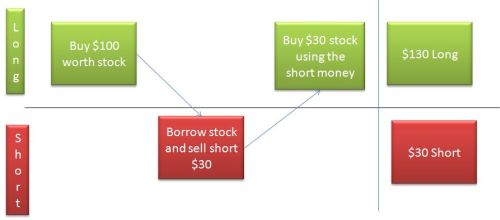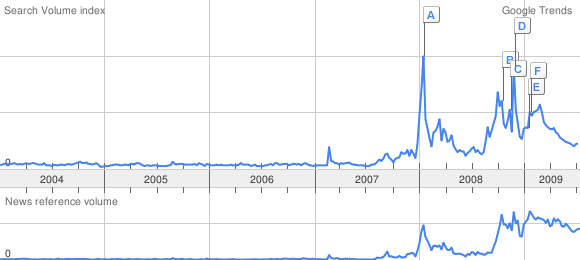Business of Indiabulls Power
The Indiabulls Power IPO is another power IPO to hit the Indian market after the Adani Power IPO. Indiabulls Power IPO is from the promoters of the Indiabulls group, which have a large presence in the real estate sector.
Although Indiabulls Power was incorporated in 2007 and is relatively new, it has some 104 subsidiaries of its own through which it proposes to carry out its business (in addition to the parent). Most of these have the same registered office – E – 29, First Floor, Connaught Place, New Delhi and I wonder why Indiabulls Power needs so many subsidiaries.
Indiabulls Power is in the business of developing thermal and hydro power projects and it currently has the following projects under development. The Indiabulls IPO is planned to raise funds to partly finance these power projects.
Price Band and Open and Close Dates
The price band is set between 40 to 45 rupees. The IPO is scheduled to open on 12th Oct and close on 15th Oct.
IPO Grading
CRISIL has graded this IPO – 3 out of 5, which indicates average fundamentals relative to other stocks in India. The following factors influenced the IPO grading:
- The company plans to operate in a sector that is expected to show good growth because of India’s growth rates and the resultant demand for power.
- The strong track record of the promoters weighs the rating in their favor.
- Negatives are that the promoters don’t have any experience in the power sector.
- That they will have to depend on state electricity boards for offtake over the long term.
- The returns on projects won through competitive bidding may not turn out be high due to the intense competition.
Indiabulls Power Thermal Projects
| Name |
Capacity |
Commissioned by |
| Amravati Phase 1 Power Project |
1,320 MW |
First unit of 660 MW to be commissioned by June 2012 and full unit by September 2012 |
| Nashik Power Project |
1,335 MW |
5 units of 135 MW to be commissioned by Sep 2011, 2 units of 330 MW to be commissioned by Feb 2012 |
| Bhaiyathan Power Project |
1,320 MW |
660 MW to be commissioned by December 2012, fully commissioned by March 2013. |
| Amravati Phase 2 Power Project |
1,320 MW |
1st unit of 660 MW to be commissioned by March 2013, fully commissioned by June 2013 |
| Chhatisgarh Power Project |
1,320 MW |
660 MW by June 2013, fully commissioned by September 2013. |
Indiabulls Power Hydro Projects: Indiabulls Power is planning to set up 4 medium sized hydro projects of 60 MW, 30 MW, 46 MW and 31 MW in Arunachal Pradesh.
Financials of Indiabulls Power
Since Indiabulls Power has still not commenced operations, I was surprised to see that it had any earnings at all. But it has earnings and here is the break-up of that income:
| Particulars |
For the year ended March 31st 2009 (Rs. in millions) |
| Dividend Income |
538.56 |
| Interest on inter corporate deposits |
627.11 |
| Interest on fixed deposits |
263.87 |
| Interest on refund of bid deposits |
40.61 |
| Total |
1,470.15 |
Looks like the subsidiaries are making money for the parent, but the earnings are not from the core business of the company, which is power generation and distribution, so there is not much to go by in terms of the earnings and financials of the company to evaluate the Indiabulls IPO.
Risks facing Indiabulls Power
Indiabulls Power doesn’t have any operating history and the company is new in this business.
The first power project of Indiabulls Power – Amaravati Phase 1 is scheduled to commence in September 2012. This is still some time away. Power projects have long gestation periods and it takes them a long time to get to the point where they generate positive cash flow. So the company is still a few years away from turning positive cash flows.
The other thing with power projects is that they are a capital intensive business. Indiabulls Power estimates that they need Rs. 310,524.00 million for the projects that they are developing. Delay in procuring financing or licensing will impact operations and ultimately profitability. Approximately 25% of the project is estimated to be financed from equity and the rest from debt. So, the company will be significantly debt – laden as well.
These projects require a large amount of coal and water. Indiabulls Power has gotten into agreements with various other entities for the allocation of these raw materials, but a change in the estimate v actuals, or unavailability of other raw material will significantly impact the company.
There is an income tax provision that allows companies which commence operations related to power generation 100% deduction in profits provided they commence before March 31, 2011. The current date of commencement for Indiabulls Power is after this date. If the government doesn’t extend the date, then Indiabulls Power stands at a significant disadvantage to other power players.
This is just a summary of the Indiabulls Power IPO from its prospectus filed with SEBI and is only meant to give you some details about the business of the company. This is not a buy or sell recommendation on the Indiabulls power IPO.
This site has regular features about IPOs, FDs and other investment ideas, if you would like to get that content by email, please click here.


